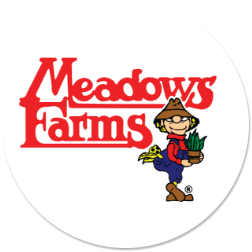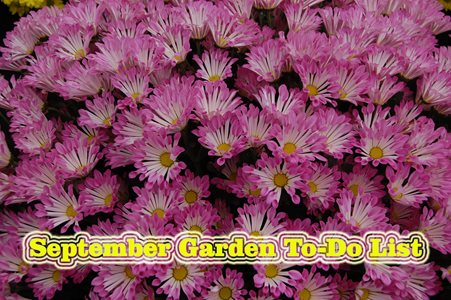Here is our comprehensive garden task list for gardens in the greater DC metro region for September courtesy of Washington Gardener Magazine. Your additions to this list are most welcome:
- Keep an eye out for the first frost date. In Zone 6, it is expected between Oct 3 and Nov 8 and in Zone 7 it is predicted between Oct 7 and Nov 7.
- Divide and transplant perennials — in particular, peonies, and iris.
- Pick apples at a local pick-your-own farm or visit a local farmer’s market.
- Pot up rosemary and chives for over-wintering indoors.
- Take cuttings from your coleus and begonia to propagate and over-winter indoors.
- Look out for any poison ivy vines which will turn crimson in the fall and be easy to distinguish from other vines.
- Check your local Meadows Farms for end-of-summer bargains.
- Put netting over your pond to prevent the accumulation of leaves and debris.
- Start feeding birds to get them in the habit for this winter.
- Attend a local garden club meeting or plant exchange.
- Pick mature tomatoes and peppers to ripen on your window sills.
- Turn your compost pile weekly and don’t let it dry out. Work compost into your planting beds.
- Remove rotting fruits from fruit trees and compost them.
- Plant evergreens for winter interest.
- Weed.
- Plant garlic bulbs.
- Collect plant seeds for next year’s planting and for trading.
- Plant mums and fall season annuals.
- Fertilize your lawn and re-seed if needed.
- Dig up bulbs from your Gladiolus, Canna, Caladiums, and other tender bulbs, cut off foliage, dry for a week, and then store
- for the winter.
- Transplant trees and shrubs.
- Harvest your herbs often and keep them trimmed back to encourage leafy growth.
- Bring in house plants if you took them out for the summer.
- If your conifers start shedding their needles or your spring bulb foliage starts peaking out of the ground, don’t worry- this is normal for our Autumn cycle.
- Leave hummingbird feeders out until October 15.
- Start bulb plantings of early spring bloomers at the end of the month.
- Watch your pumpkins and squash for harvest when their rinds fully
- Divide ornamental grasses.
- Cut herbs and flowers for drying indoors.
- Plant strawberries in a site with good drainage for harvest next spring.
- Look out for slug eggs grouped under sticks and stones – they are the size of BBs and pale in color.
- Plant cover crops in vegetable gardens and annual beds (for example, rye, clover, hairy vetch, and winter peas).
- Begin conditioning the Christmas Poinsettias and Christmas Cactus to get them ready for the upcoming holiday season.
- Bring Amaryllis indoors before a hard freeze. Repot every other year at this time. Store in a cool, dark place and do not water until the flower buds or leaves emerge.
- Your summer annuals will be reviving now with cooler temps and some rain. Cut back any ragged growth and give them some fertilizer. They should put on a good show until the first hard frost.


